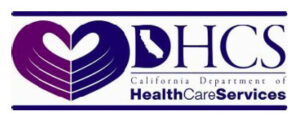Alcohol abuse is a significant public health concern, affecting millions worldwide. While it can be a social lubricant and a source of pleasure for some, for others, it leads to dependence and serious health consequences. This comprehensive guide offers a 10-step framework to help individuals quit drinking alcohol, focusing on practical strategies for overcoming cravings, managing withdrawal symptoms, and building a lasting recovery. It’s crucial to remember that this guide provides information and strategies, but professional medical support is highly recommended for personalized guidance and treatment. If you or someone you know is struggling with alcohol dependence, seek professional help immediately.
1. Acknowledge the Problem and Seek Support
The first step is acknowledging that there’s a problem. This involves honestly evaluating your relationship with alcohol. Are you drinking more than you intended? Are you experiencing negative consequences from your drinking, such as relationship problems, job difficulties, or health issues? Be honest with yourself about the impact of alcohol on your life. Do not downplay your drinking habits. Recognizing the problem is the cornerstone of change. Don’t be afraid to reach out to friends, family, or support groups, such as Alcoholics Anonymous (AA). Support systems are crucial for providing encouragement and accountability. A support network can offer practical advice, share experiences, and provide emotional comfort throughout the recovery journey.
2. Identify Triggers and Develop Coping Mechanisms
Identifying the specific situations, emotions, or people that trigger your drinking is vital. Are you drinking more at social events, when stressed, or in specific locations? Keeping a journal can be incredibly helpful to track your drinking patterns and associate them with particular situations. Once you have identified your triggers, develop coping mechanisms to manage them. For instance, if you drink to relieve stress, explore healthier stress-reduction techniques like meditation, exercise, or spending time in nature. If social situations are triggers, practice assertive communication skills to decline alcohol offers or politely excuse yourself from gatherings where drinking is prominent.
3. Set Realistic Goals and Create a Support System
Establishing realistic goals is essential to maintain motivation and prevent feelings of overwhelm. Start small with achievable targets. For example, aiming to reduce alcohol consumption by 25% in the first week is more manageable than completely quitting overnight. Create a support network consisting of friends, family, or support groups to provide encouragement, accountability, and emotional support.
4. Understand the Withdrawal Process and Seek Medical Advice
Alcohol withdrawal can be dangerous, even fatal, in severe cases. Understanding the symptoms associated with withdrawal, such as anxiety, tremors, nausea, and seizures, is crucial. It’s essential to consult with a healthcare professional to develop a safe and effective plan for managing withdrawal symptoms if you have a history of heavy drinking.
5. Develop Healthy Coping Mechanisms for Cravings and Stress
Cravings are common during recovery. Learn healthy coping mechanisms to manage cravings, such as deep breathing exercises, mindfulness techniques, and engaging in activities that distract you from the urge to drink. Stress reduction is also crucial. Develop healthy strategies to manage stress, such as exercise, meditation, spending time with loved ones, and pursuing hobbies.
6. Engage in Regular Exercise and Healthy Diet
Regular physical activity and a healthy diet play a significant role in overall well-being and recovery. Exercise helps reduce stress, improve mood, and boost energy levels, which can make it easier to cope with cravings and challenges. A balanced diet provides essential nutrients to support the body’s recovery process.
7. Prioritize Sleep and Manage Stress Effectively
Adequate sleep is vital for physical and mental restoration. Establish a regular sleep schedule and create a relaxing bedtime routine to improve sleep quality. Developing effective stress-management techniques is crucial, as stress can trigger cravings and relapse.
8. Build a New Routine and Social Network
Creating a new routine that excludes alcohol will help create positive habits. This might involve finding new hobbies, spending time in nature, engaging in social activities that don’t involve alcohol, and focusing on self-care. Cultivate healthier social connections, replacing alcohol-centered gatherings with events that foster positive interactions and support.
9. Learn to Recognize and Manage Relapse Triggers
Relapse is a possibility during the recovery process, and it’s crucial to be prepared for it. Identify potential triggers for relapse, such as social situations, stressful events, or emotional distress. Develop strategies to manage these triggers and create a safety net to support you in returning to your recovery plan should a relapse occur.
10. Celebrate Progress and Maintain Long-Term Sobriety
Acknowledge and celebrate every milestone achieved. Recognize your progress, no matter how small. Continue to build your support network and develop healthy coping mechanisms to maintain long-term sobriety. Ongoing support is vital for sustained recovery. Regular check-ins with healthcare professionals or support groups can be valuable for ongoing guidance and monitoring.
Quitting drinking alcohol is a significant personal journey. This guide provides a framework for understanding and addressing the challenges involved, but professional medical assistance is highly recommended. Seeking help from a healthcare provider or support group is essential for personalized support and coping strategies. Remember, you are not alone, and with dedication, support, and the right strategies, you can achieve lasting sobriety.






